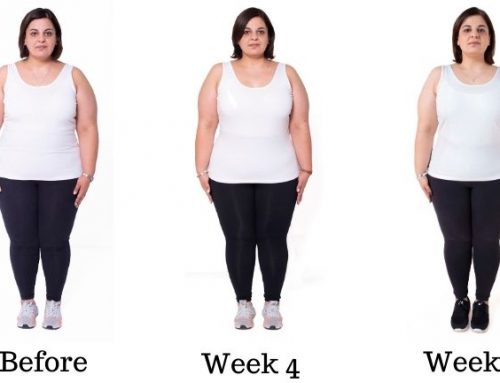
Nike Oshinowo, a Nigerian entrepreneur, former beauty queen, pageant director, style icon, and socialite had this to say about this debilitating ailment:
“There is this thing about endometriosis, that it is a disease not truly understood because we haven’t done enough research. Where does it come from? How you get it is still not thoroughly understood because enough awareness has not been created. Unlike HIV/AIDS and cancer, a few years ago, there was no hope for a cure but now there is more awareness and people do not die of these disorders as before. But it is not the same about endometriosis.
This makes me wonder. Is it because it is a female thing? Is it because I’m a woman, considered a 2nd class citizen in the world? Must I suffer because I’m a woman? You wonder and ponder over these things. I need answers to these questions. Why do I have it and my sister doesn’t? Is it hereditary? Someone should tell me. If I give birth to a girl, would she have endometriosis?
This is why we need serious awareness. My sister doesn’t have this disorder. My mother doesn’t have it, but then, I look at my mother’s siblings and I discovered I have a sister that doesn’t have a child. I wonder if she suffered from endometriosis. I have a distant male cousin that doesn’t have a child. Does it also affect boys?
There are so many unanswered questions. If I lock you up in a room for a month, you won’t finish answering my questions. I have so many questions. We live in a country in which we believe in symptoms more than the causes.”
So what in the world is Endometriosis?
Endometriosis is a gynecological condition in which cells from the lining of the uterus (endometrium) appear and flourish outside the uterine cavity, most commonly on the membrane which lines the abdominal cavity, the peritoneum.
The uterine cavity is lined with endometrial cells, which are under the influence of female hormones. Endometrial cells in areas outside the uterus are also influenced by hormonal changes and respond in a way that is similar to the cells found inside the uterus.
Symptoms of endometriosis are pain and infertility. The pain often is worse with the menstrual cycle
Symptoms of endometriosis are pain and infertility. The pain often is worse with the menstrual cycle and is the most common cause of secondary dysmenorrhea. Endometriosis was first identified by Baron Carl von Rokitansky in 1860.Endometriosis is typically seen during the reproductive years; it has been estimated that endometriosis occurs in roughly 6–10% of women. Symptoms may depend on the site of active endometriosis. Its main but not universal symptom is pelvic pain in various manifestations. Endometriosis is a common finding in women with infertility.
There is no cure for endometriosis, but it can be treated in a variety of ways, including pain medication, hormonal treatments, and surgery.
Pelvic pain
A major symptom of endometriosis is recurring pelvic pain. The pain can range from mild to severe cramping or stabbing pain that occurs on both sides of the pelvis, in the lower back and rectal area, and even down the legs. The amount of pain a woman feels correlates poorly with the extent or stage (1 through 4) of endometriosis, with some women having little or no pain despite having extensive endometriosis or endometriosis with scarring, while other women may have severe pain even though they have only a few small areas of endometriosis.
Throbbing, gnawing, and dragging pain to the legs are reported more commonly by women with endometriosis. Compared with women with superficial endometriosis, those with deep disease appear to be more likely to report shooting rectal pain and a sense of their insides being pulled down. Individual pain areas and pain intensity appears to be unrelated to the surgical diagnosis, and the area of pain unrelated to area of endometriosis.
Endometriosis lesions react to hormonal stimulation and may “bleed” at the time of menstruation. The blood accumulates locally, causes swelling, and triggers inflammatory responses. This process may cause pain. Pain can also occur from adhesions (internal scar tissue) binding internal organs to each other, causing organ dislocation. Fallopian tubes, ovaries, the uterus, the bowels, and the bladder can be bound together in ways that are painful on a daily basis, not just during menstrual periods.
Also, endometriotic lesions can develop their own nerve supply, thereby creating a direct and two-way interaction between lesions and the central nervous system, potentially producing a variety of individual differences in pain that can, in some women, become independent of the disease itself.
Infertility
Many women with infertility may have endometriosis.
Many women with infertility may have endometriosis. As endometriosis can lead to anatomical distortions and adhesions (the fibrous bands that form between tissues and organs following recovery from an injury), the causality may be easy to understand; however, the link between infertility and endometriosis remains enigmatic when the extent of endometriosis is limited.Others
Other symptoms include constipation and chronic fatigue.
In addition to pain during menstruation, the pain of endometriosis can occur at other times of the month. There can be pain with ovulation, pain associated with adhesions, pain caused by inflammation in the pelvic cavity, pain during bowel movements and urination, during general bodily movement like exercise, pain from standing or walking, and pain with intercourse. But the most desperate pain is usually with menstruation and many women dread having their periods. Pain can also start a week before menses, during and even a week after menses, or it can be constant. There is no known cure for endometriosis.
Complications
Complications of endometriosis include internal scarring, adhesions, pelvic cysts, chocolate cyst of ovaries, ruptured cysts, and bowel and urethral obstruction resulting from pelvic adhesions. Infertility can be related to scar formation and anatomical distortions due to the endometriosis; however, endometriosis may also interfere in more subtle ways: cytokines and other chemical agents may be released that interfere with reproduction. Peritonitis from bowel perforation can occur.
Ovarian endometriosis may complicate pregnancy by decidualization, abscess and/or rupture.
Pleural implantations are associated with recurrent right pneumothoraces at times of menses, termed catamenial pneumothorax.
Risk Factors
Genetics
Genetic predisposition plays a role in endometriosis. Daughters or sisters of patients with endometriosis are at higher risk of developing endometriosis themselves; low progesterone levels may be genetic, and may contribute to a hormone imbalance. There is an about 6-fold increased incidence in women with an affected first-degree relative.
Environmental toxins
Several studies have investigated the potential link between exposure to dioxins and endometriosis, but the evidence is equivocal and potential mechanisms are poorly understood.
Aging
Aging brings with it many effects that may reduce fertility. Depletion over time of ovarian follicles affects menstrual regularity. Endometriosis has more time to produce scarring of the ovary and tubes so they cannot move freely or it can even replace ovarian follicular tissue if ovarian endometriosis persists and grows.
Fibroids can slowly grow and start causing endometrial bleeding that disrupts implantation sites or distorts the endometrial cavity which affects carrying a pregnancy in the very early stages. Abdominal adhesions from other intra-abdominal surgery or ruptured ovarian cysts can also affect tubal motility needed to sweep the ovary and gather an ovulated follicle (egg).
Incidences of endometriosis have occurred in postmenopausal women, and in less common cases, girls may have endometriosis symptoms before they even reach menarche (first menstruation).
Prevention
Limited evidence indicates that the use of combined oral contraceptives is associated with a reduced risk of endometriosis.
To Be Continued…






Facebook Comments